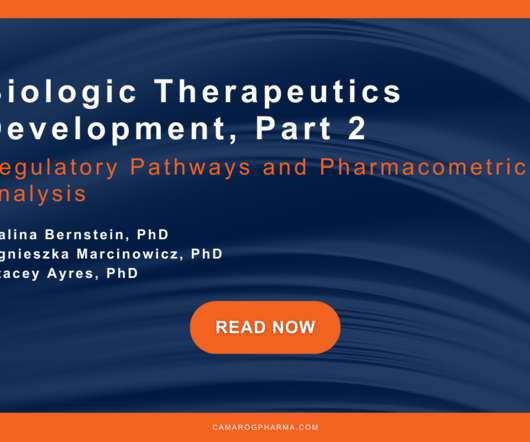In the News: October Regulatory and Development Updates
Camargo
NOVEMBER 11, 2020
Each month, Camargo’s “In the News” series highlights important changes and advancements in the regulatory and development space and explores how those changes could impact your program. Labeling regulations prohibit reminder ads for products with boxed warnings, which the FDA requires when a drug product has very serious risks.












Let's personalize your content